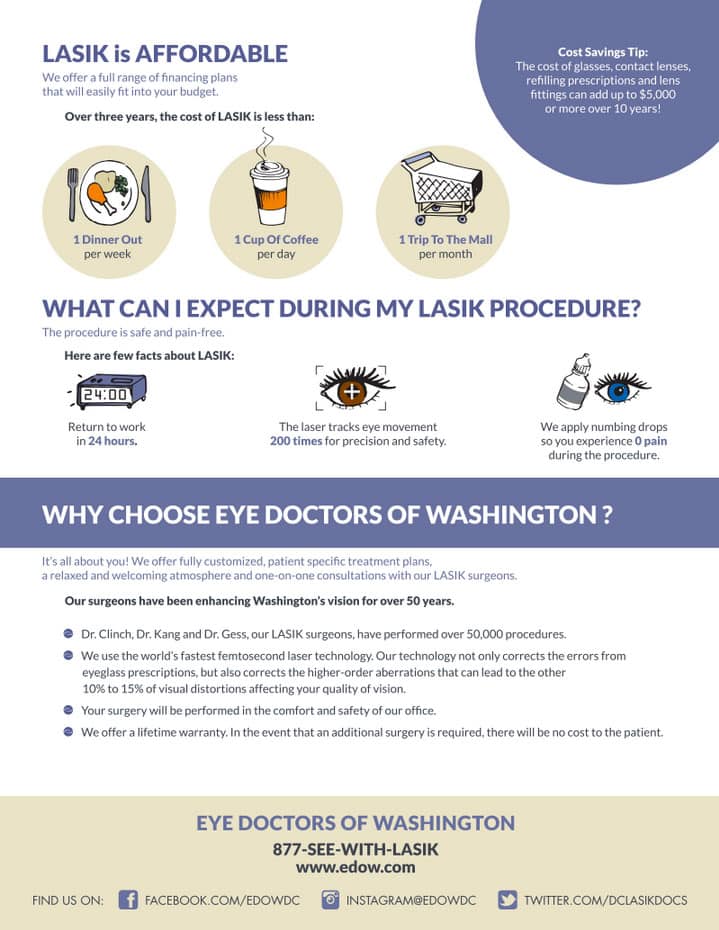What Are The Differences And Similarities In Between SMILE Eye Surgery And LASIK And PRK?
What Are The Differences And Similarities In Between SMILE Eye Surgery And LASIK And PRK?
Blog Article
Article Developed By-Dreyer Sander
If you've been considering SMILE eye surgical treatment, you could ask yourself just how it compares to LASIK and PRK. Each procedure has its very own set of advantages and factors to consider. From quicker healing times to possible risks, there are essential differences you should be aware of before making a decision. Understanding https://collegian.com/2021/06/category-news-csu-system-board-of-governors-approves-tuition-increase/ will help you make an informed choice that lines up with your particular needs and expectations. Curious to understand more concerning just how these procedures contrast carefully? Go on checking out to gain a comprehensive understanding of SMILE, LASIK, and PRK.
SMILE Eye Surgical Treatment Review
If you're considering SMILE eye surgical procedure, you'll locate it to be a minimally invasive treatment with a quick healing time. During SMILE (Tiny Cut Lenticule Removal), a laser is used to create a tiny, accurate cut in the cornea to eliminate a tiny item of tissue, improving it to remedy your vision. This differs from LASIK, where a flap is created, and PRK, where the external layer of the cornea is entirely removed.
One of the crucial benefits of SMILE is its minimally intrusive nature, bring about a faster healing process and much less discomfort post-surgery. The recovery time for SMILE is fairly quick, with many patients experiencing improved vision within a day or two. This makes it a prominent selection for those seeking a hassle-free and effective vision adjustment treatment. Furthermore, SMILE has actually been shown to have a reduced threat of dry eye disorder contrasted to LASIK, making it a positive option for people concerned regarding this prospective side effect.
Distinctions Between SMILE, LASIK, and PRK
When contrasting SMILE, LASIK, and PRK eye surgical treatments, it is essential to recognize the distinct strategies utilized in each procedure for vision modification.
SMILE (Tiny Cut Lenticule Extraction) is a minimally intrusive procedure that includes producing a small incision to draw out a lenticule from the cornea, reshaping it to correct vision.
LASIK (Laser-Assisted In Situ Keratomileusis) involves creating a slim flap on the cornea, using a laser to reshape the underlying tissue, and afterwards rearranging the flap.
PRK (Photorefractive Keratectomy) removes the outer layer of the cornea before improving the tissue with a laser.
The primary difference depends on the way the cornea is accessed and dealt with. SMILE is flapless, making it an excellent option for people with thin corneas or those associated with contact sports. LASIK provides rapid aesthetic recuperation due to the flap production, but it might present a greater risk of flap-related problems. PRK, although having a longer recovery period, stays clear of flap-related issues completely.
Recognizing these variances is vital in picking the most appropriate procedure for your vision adjustment needs.
Benefits And Drawbacks Contrast
To examine the advantages and downsides of SMILE, LASIK, and PRK eye surgical treatments, it's important to take into consideration the certain advantages and potential restrictions of each treatment. SMILE surgical treatment provides the benefit of a minimally invasive treatment, with a smaller sized incision and potentially quicker recovery time contrasted to LASIK and PRK. It also lowers the risk of completely dry eye post-surgery, an usual negative effects of LASIK. Nonetheless, SMILE may have constraints in treating higher degrees of nearsightedness or astigmatism contrasted to LASIK.
complications in cataract surgery offers rapid aesthetic healing and very little discomfort during the procedure. It's very effective in treating a vast array of refractive mistakes, consisting of nearsightedness, hyperopia, and astigmatism. Yet, LASIK carries a threat of flap complications, which can affect the corneal structure.
PRK eye surgical treatment, while not as popular as LASIK, avoids producing a corneal flap, minimizing the danger of flap-related complications. It's suitable for people with thin corneas or uneven corneal surfaces. However, PRK has a longer recuperation time and may entail extra discomfort during the recovery procedure.
Verdict
So, when it comes to choosing in between SMILE, LASIK, and PRK, consider it like selecting the perfect pair of footwear. SMILE is like a sleek, comfy set of tennis shoes - fast and very easy.
LASIK is a lot more like trendy high heels - fancy and quickly, yet with some possible dangers.
PRK is like strong hiking boots - reputable and resilient, however calling for a bit even more effort and time.
Eventually, the most effective option depends upon your private demands and choices.
